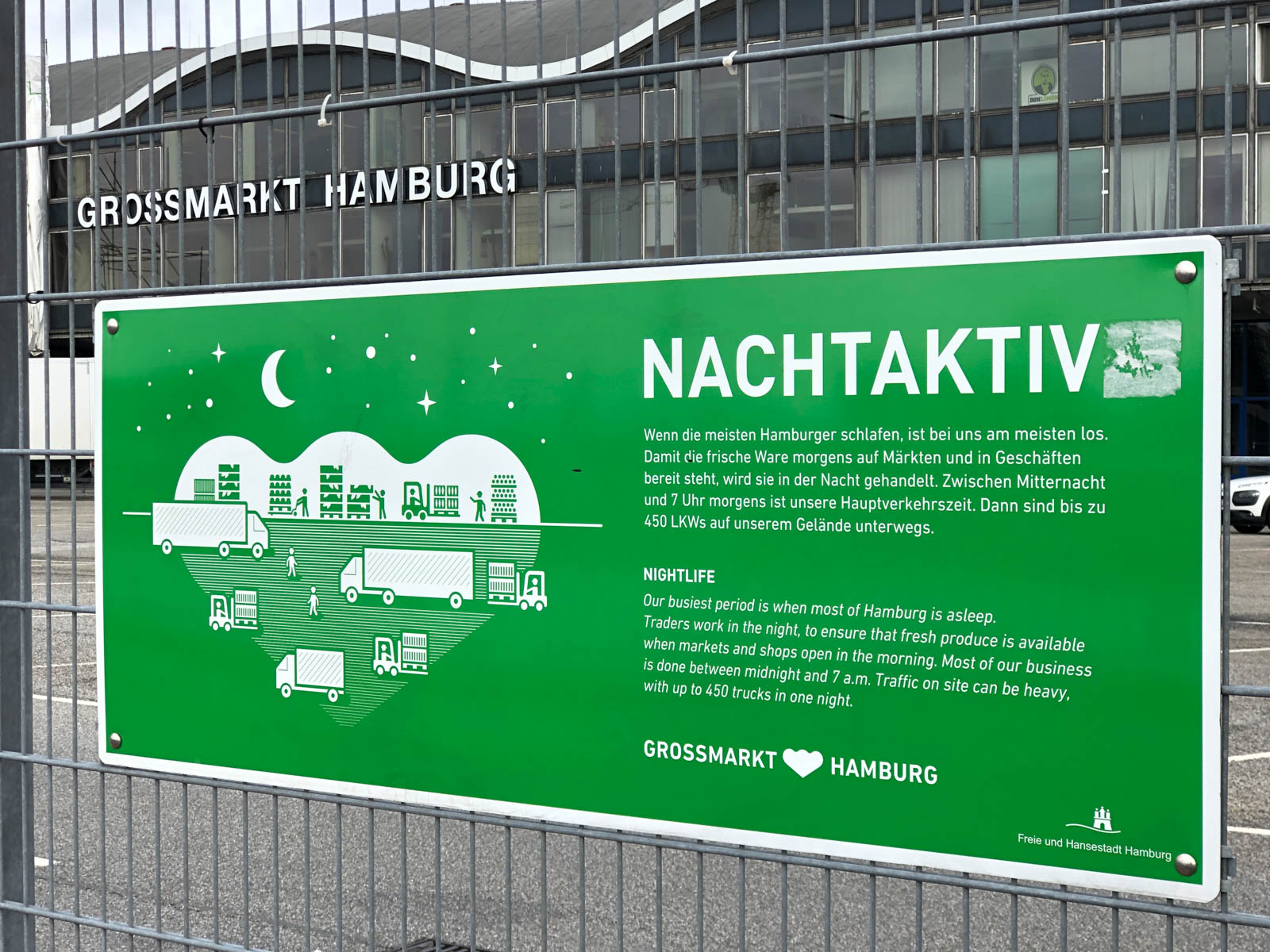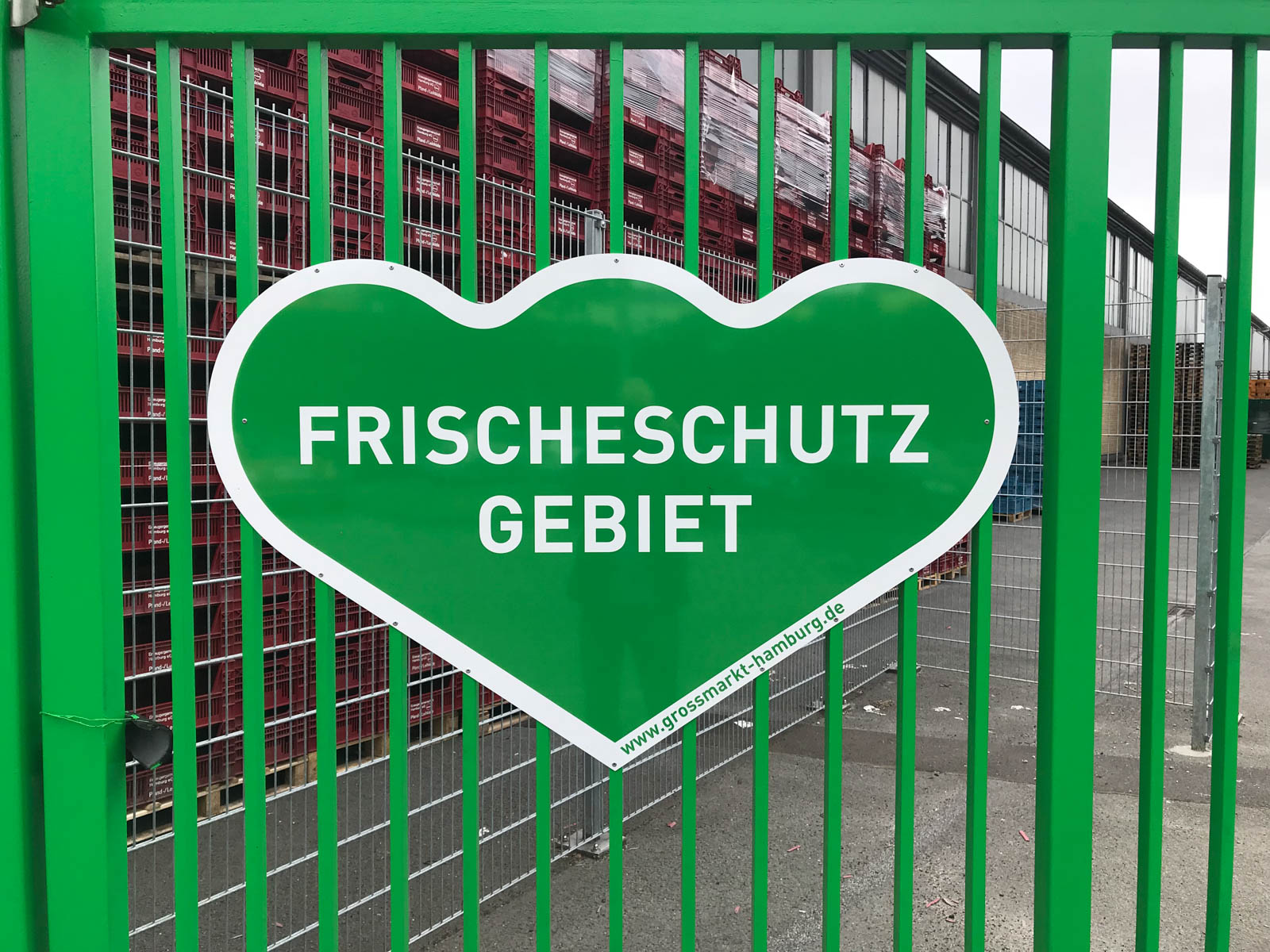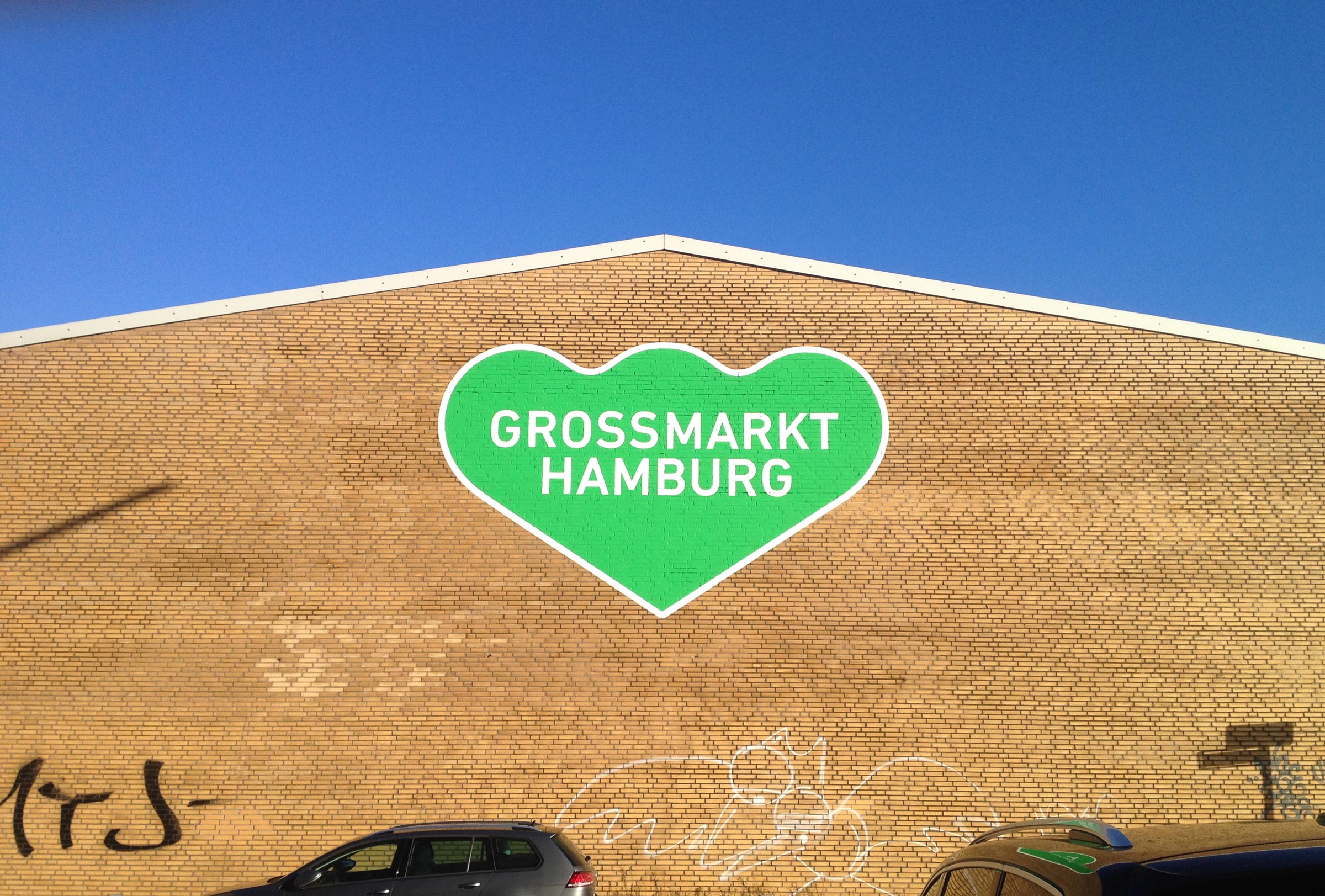The future of urban supply
The green heart of the city
Hamburg’s wholesale market is the city’s central supply organ for ultra-fresh products. It needs a heart with extra power. A look at the present, the future, and a logo with three chambers.
It is around 7 o’clock in the morning when the last wholesale market traders and their customers leave the halls in Hammerbrook and the cleaning is done. It used to be quiet now, because the next deliveries were not due until the evening. But the wholesale market with its striking building – one of the most important concrete shell constructions in Germany – and the extensive area at the entrance to Hamburg is gradually and radically changing. The site is already the venue for many events and music shows.
Around 420 vegetable, fruit and flower traders offer their goods in the halls. Every year, one and a half million tons of goods are handled on the 27-hectare site, with a value of around two billion euros. It is mainly weekly market traders, smaller retailers and the chefs of good restaurants that provide themselves with an endless supply of fresh produce here.
Counter-movement; local supply
Population density in major cities is increasing continuously. In Hamburg, the population is expected to increase by 11% by 2030. By then, almost two million people will live in the Hanseatic city. Two million people who need to be catered for.
As the growing city moves further and further outwards, the wholesale market is moving into the center as if in a counter-movement. “The spatial accessibility of the wholesale market and its proximity to all of the city’s supply points is becoming increasingly important,” says Eliane Steinmeyer, Managing Director of Hamburg Wholesale Market.
And not only against the background of infrastructural and logistical changes or the backdrop of an emerging mobility revolution. The decline in agricultural land close to cities and the generally unforeseeable consequences of climate change for agricultural land are also bringing the issue of an environmentally friendly, seamless supply of large urban centers more and more into the foreground. “We see this as one of the greatest challenges facing society, but also as an opportunity that we want to promote and share as a supply organization,” says Steinmeyer.
Perhaps one could also say that it is no more and no less than the task of providing for our future.

Designed vision: The green heart of the city
For the Hamburg wholesale market logo, we designed our symbolic ideal of the city’s largest supply organ into the unique typology of the striking façade view with the three-wave roof line of the wholesale market building: The Green Heart of the City. A green heart with three chambers, with extra power, so to speak. A heart that always performs at its best when others come to rest. A pump of freshness for an entire metropolis. A heart that has to provide for an increasing number of people and future generations. A heart that will increasingly become a matter of the heart for all Hamburg residents.








The nocturnal FRISCHESCHUTZGEBIET also becomes visible during the day and explains itself to all fence guests along the European cycle path.









